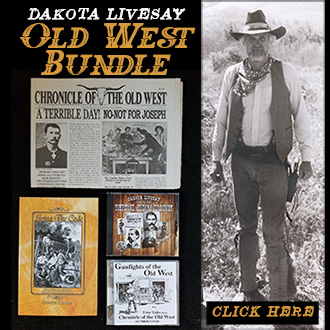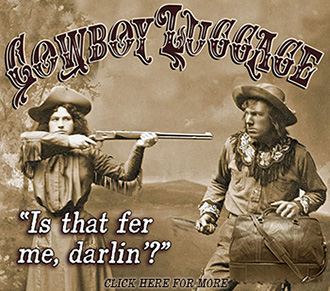 This book is a very carefully researched, well-written documentary about the men who volunteered to “go west” during the Civil War to fight Indians on the northern plains. They marched on foot (horses were scarce due to the war back east) to Wyoming where they built forts, protected telegraph lines, lived in remote outposts where they were sometimes deprived of proper shelter, food and clothing.
This book is a very carefully researched, well-written documentary about the men who volunteered to “go west” during the Civil War to fight Indians on the northern plains. They marched on foot (horses were scarce due to the war back east) to Wyoming where they built forts, protected telegraph lines, lived in remote outposts where they were sometimes deprived of proper shelter, food and clothing.
The Eleventh Ohio Volunteer Cavalry, Company K is fascinating reading for anyone interested in the Plains Indians and their last days in relation to America’s Westward expansion. Important skirmishes, battles and fights are chronicled here sometimes by the men themselves who wrote letters home to family members, or to their local newspapers.
The soldiers suffered greatly, sometimes putting up with commanding officers who did not always have their welfare in mind. Food and supply shortages hindered camp life as did some horses who were little more than rugged Indian ponies bolting and bucking, offering more danger during emergencies than the Indians did.
Some letters included stories about Jim Bridger, a mountain man known for spinning wild yarns that entertained the troops.
The book is divided into sections beginning with “The Long Road to Laramie,” then comes “Life at the Fort”, which tells about such things as teamsters quarters, sutlers store, horse corrals and graveyard. Information covers daily drills, horse grooming, inspection and maneuvers, pulling guard duty or cutting wood. Laundresses on “Soapsuds Row” charged one dollar per month which was taken immediately out of soldiers pay. Terrible weather conditions included blizzards and sub-zero temperatures. More than one soldier froze to death when caught overnight on the plains. The term “firewater” came from the buyer tossing a splash of whiskey into a fire to see if it flared up. If not, that meant the whiskey had been watered down.
By July 1862 Indian attacks along the Oregon Trail forced the migration of travelers to stop for a while to allow time for soldiers to ride to the rescue. The government was worried that Indians could stop communication between East and West. Stage holdups, cut telegraph lines, and attacks on freighters kept the soldiers riding day and night.
For three years the men battled hot dry summers, cold winters, hail storms, sudden drops in temperature, unrelenting thunder storms, lice, poor rations, barren living quarters and always Indians. Readers get a glimpse of a soldier’s life on the lonely prairie where death could come at any moment.
The book tells of some chiefs who came to the fort with their followers seeking peace, food and a chance to voice their opinions concerning white people who had invaded their land and driven away buffalo and deer previously found in abundance.
The boys were glad when the 1866 they were told they were finally going home to Ohio. This time they rode their horses on the trip. Some friends were left in graveyards, killed by Indians, disease, and even suicide.
This book covers an important chapter in our Old West history that has been overshadowed by the eastern fighting during the Civil War time period. This chronicle is a must read for anybody interested in the Plains Indians Wars during the 1860s. You can grab it HERE.
Editor’s Note: The reviewer Phyllis Morreale-de La Garza is the author of numerous books about the Old West including Hell Horse Winter of the Apache Kid published by Silk Label Books, P.O. Box 700, Unionville, New York 10988 (845) 726-3434. Www.silklabelbooks.com
*Courtesy of Chronicle of the Old West newspaper, for more click HERE.
 Born in Austin, Texas in 1856, Frank Jones joined the Texas Rangers at the age of 17. He saw his first action when he and two other Rangers were sent after some Mexican horse thieves. The horse thieves ambushed the Rangers. Frank’s two companions were immediately taken out, but Frank was able to kill two of the bandits and capture a third.
Born in Austin, Texas in 1856, Frank Jones joined the Texas Rangers at the age of 17. He saw his first action when he and two other Rangers were sent after some Mexican horse thieves. The horse thieves ambushed the Rangers. Frank’s two companions were immediately taken out, but Frank was able to kill two of the bandits and capture a third. Born in Austin, Texas in 1856, Frank Jones joined the Texas Rangers at the age of 17. He saw his first action when he and two other Rangers were sent after some Mexican horse thieves. The horse thieves ambushed the Rangers. Frank’s two companions were immediately taken out, but Frank was able to kill two of the bandits and capture a third.
Born in Austin, Texas in 1856, Frank Jones joined the Texas Rangers at the age of 17. He saw his first action when he and two other Rangers were sent after some Mexican horse thieves. The horse thieves ambushed the Rangers. Frank’s two companions were immediately taken out, but Frank was able to kill two of the bandits and capture a third.
 This book is a very carefully researched, well-written documentary about the men who volunteered to “go west” during the Civil War to fight Indians on the northern plains. They marched on foot (horses were scarce due to the war back east) to Wyoming where they built forts, protected telegraph lines, lived in remote outposts where they were sometimes deprived of proper shelter, food and clothing.
This book is a very carefully researched, well-written documentary about the men who volunteered to “go west” during the Civil War to fight Indians on the northern plains. They marched on foot (horses were scarce due to the war back east) to Wyoming where they built forts, protected telegraph lines, lived in remote outposts where they were sometimes deprived of proper shelter, food and clothing.




